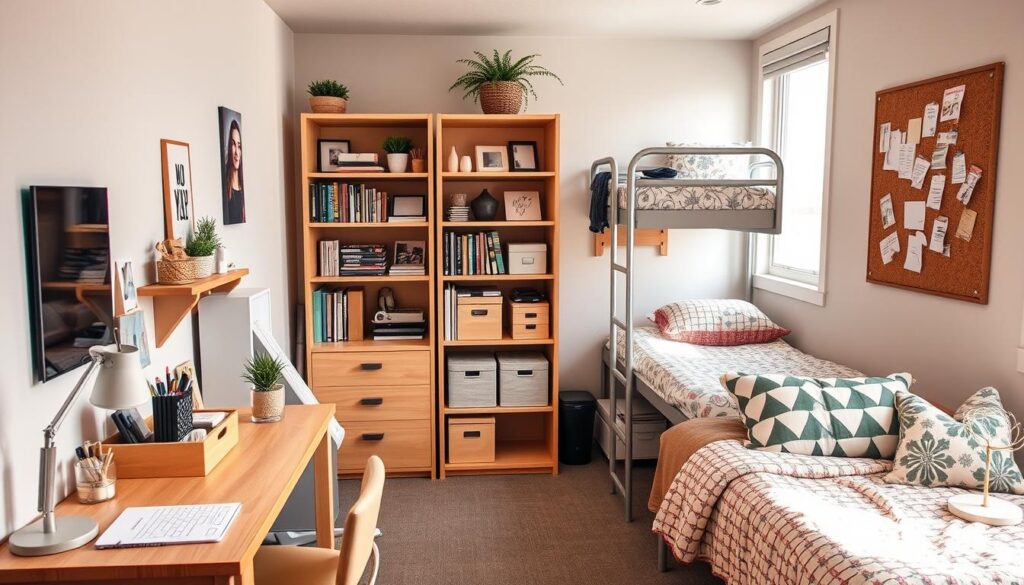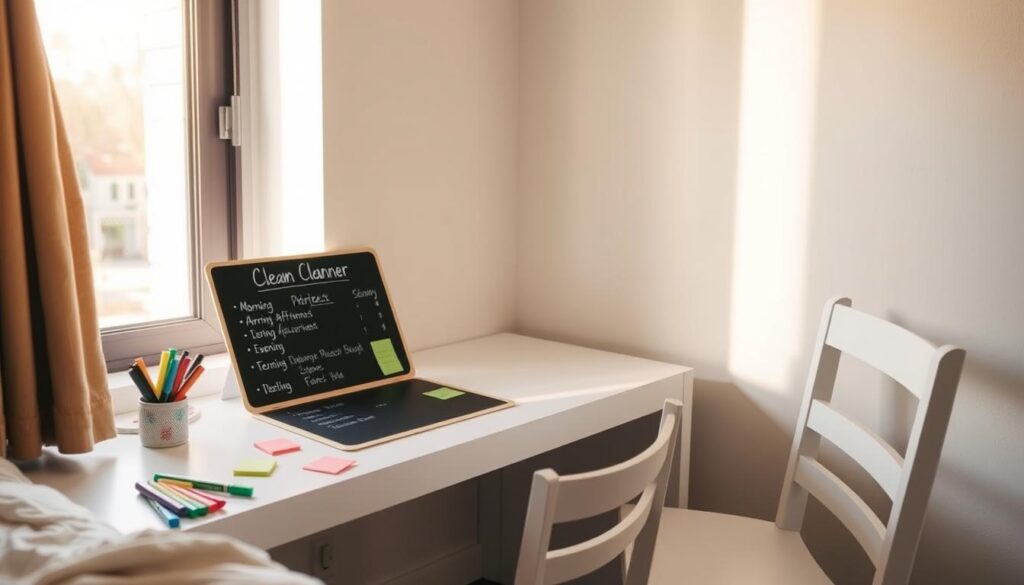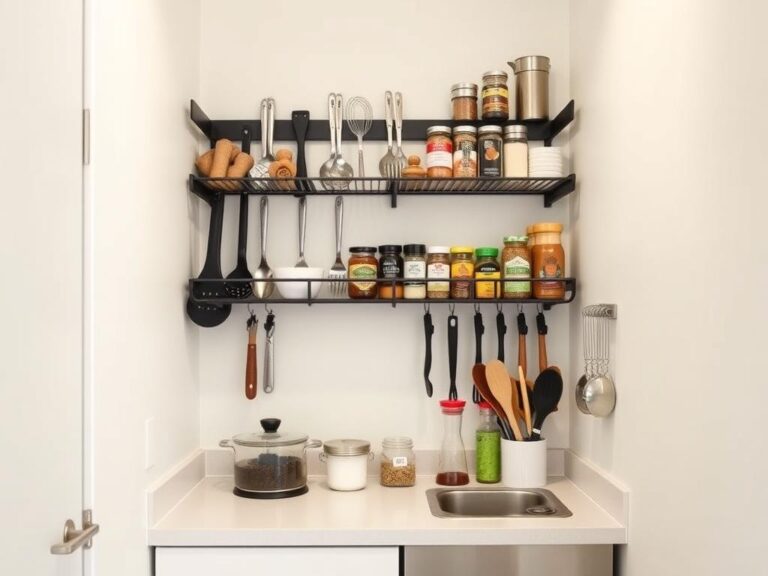How to keep your dorm clean when sharing with a roommate
Discover how to keep your dorm clean when sharing with a roommate. Simple steps for a stress-free environment.
Starting college brings fresh adventures, including living with someone new in tight quarters. For many first-year students, this marks their initial experience managing shared spaces outside family environments. Balancing academic demands, social activities, and personal habits while maintaining order requires thoughtful planning.

Small living areas fill up fast when two people coexist. Differing schedules and cleanliness preferences can lead to frustration if not addressed early. Proactive communication and collaborative systems become essential tools for harmony.
Establishing mutual expectations from day one helps prevent common conflicts. Simple routines like designated storage zones or weekly cleaning rotations create structure without rigidity. These approaches respect individual lifestyles while prioritizing a functional environment.
Key Takeaways
- Shared campus housing demands adaptability and mutual respect between residents
- Space limitations amplify clutter risks without consistent organization habits
- Early conversations about preferences prevent most cleanliness disputes
- Joint responsibility strengthens roommate relationships over time
- Practical organizational systems reduce stress during academic challenges
Understanding the Dorm Room Reality
Navigating dorm life requires acknowledging the unique constraints of shared living spaces. Most campus housing units barely exceed 150 square feet – a tight squeeze for two people’s belongings and daily activities. This compact environment magnifies minor irritations into major disputes if not managed thoughtfully.
Challenges of Limited Space and Shared Areas
Typical residence hall layouts combine sleeping quarters with study zones and storage in one multifunctional area. Overpacking becomes a critical issue when both residents bring bulky furniture or duplicate appliances. Floor space disappears quickly when backpacks, shoes, and laundry baskets claim territory.
Shared surfaces like desks often become battlegrounds for territory. One person’s snack stash might invade another’s textbook zone. Without clear boundaries, everyday items transform into clutter that strains relationships.
What Else Would You Like to Know?
Choose below:
Common Points of Conflict in Dorm Living
Disagreements frequently stem from mismatched cleanliness expectations. While some students thrive in minimalist environments, others adapt to casual messiness. Unwashed dishes or overflowing trash bins create friction faster than most anticipate.
| Problem Area | Common Issues | Effective Solutions |
|---|---|---|
| Storage Allocation | Disputes over closet/drawer space | Labeled bins, under-bed organizers |
| Cleanliness Standards | Differing habits lead to tension | Weekly cleaning schedule |
| Personal Items | Clutter in shared areas | Designated storage zones |
Seasoned resident advisors note that unspoken assumptions cause 78% of roommate disputes. Addressing storage needs and hygiene preferences early prevents minor annoyances from escalating. Successful pairs treat their compact quarters as collaborative projects rather than personal domains.
Practical Steps: How to keep your dorm clean when sharing with a roommate
College roommates who address shared responsibilities early often enjoy smoother coexistence. The initial seven days set patterns that influence the entire semester. Proactive planning prevents small irritations from becoming major disputes.

Clarity Creates Cooperation
Begin with a casual conversation about personal habits and pet peeves. Some students prefer immediate dishwashing, while others batch-clean on weekends. Documenting agreements prevents selective memory later.
Create visible reminders using shared digital calendars or whiteboards. Rotate deep-cleaning duties weekly to distribute effort fairly. This approach accommodates fluctuating academic demands while maintaining baseline tidiness.
Structured Systems Reduce Stress
Effective maintenance requires realistic division of labor. A four-column chart helps track recurring tasks without micromanaging. Include flexibility for midweek adjustments during exam periods.
| Task Type | Frequency | Examples | Accountability |
|---|---|---|---|
| Surface Care | Daily | Wiping desks, sweeping crumbs | Whoever uses the space |
| Deep Maintenance | Weekly | Vacuuming, bathroom scrubbing | Alternating responsibility |
| Storage Audits | Monthly | Donating unused items | Joint effort |
Revisit agreements every three weeks to accommodate schedule changes. Successful pairs often combine scheduled cleanings with spontaneous five-minute tidy sessions. This balanced approach keeps spaces functional without feeling oppressive.
Smart Packing and Minimalism Strategies
Many students arrive on move-in day with more belongings than their space can handle. Campus living demands ruthless prioritization – a single-season wardrobe and multipurpose items often work better than sentimental clutter. Strategic editing of possessions during packing prevents storage wars later.
Prioritizing Essentials Over Clutter
Start by packing clothes for the current semester’s weather. Limit shoes to three versatile pairs and toiletries to travel-sized containers. One decorative item per roommate adds personality without overcrowding surfaces.
Students often regret bringing bulky appliances or duplicate items. Coordinate with roommates about shared essentials like mini-fridges or printers. This collaborative approach saves valuable square footage.
Utilizing Storage Solutions for Seasonal Items
Under-bed containers maximize unused vertical space for off-season jackets or extra bedding. Over-the-door organizers keep accessories accessible yet contained. Many campuses partner with storage companies for summer item swaps.
Rotate belongings every three months using vacuum-sealed bags. Ship holiday decorations home during breaks to free up closet space. This seasonal rotation strategy keeps living areas functional year-round.
Effective Communication for a Peaceful Shared Space
Open dialogue forms the foundation of successful roommate partnerships. Differing lifestyles in tight quarters demand intentional strategies to maintain harmony. Residents who master respectful communication often report higher satisfaction with their living arrangements.
Navigating Sensitive Topics Tactfully
Addressing concerns early prevents minor issues from escalating. Instead of criticizing someone else’s habits, frame discussions around shared goals. For example: “I’ve noticed dishes piling up – maybe we could create a washing schedule that works for both?”
Using “I” statements reduces defensiveness. Phrase requests as collaborative problem-solving rather than personal attacks. This approach keeps conversations productive and preserves mutual respect.
Creating Mutual Living Standards
Documented agreements prevent misunderstandings about noise and cleanliness. A simple chart clarifies expectations while allowing flexibility during exams or social events.
| Rule Type | Example Scenario | Collaborative Solution |
|---|---|---|
| Noise Management | Late-night study sessions | Quiet hours after 11 PM |
| Clean Space Maintenance | Shared bathroom upkeep | Alternate deep-cleaning weeks |
| Personal Belongings | Cluttered common areas | Designated storage bins per person |
Weekly check-ins provide opportunities to adjust rules as needed. Successful pairs often combine scheduled discussions with casual updates during shared meals. This balanced way of communicating strengthens relationships while keeping spaces functional.
Remember: compromise works both ways. Being adaptable with someone else’s preferences often encourages reciprocity. Small adjustments create an environment where both roommates feel heard and valued.
Balancing Shared Responsibilities and Daily Routines
Harmonious coexistence in tight quarters depends on strategic task management. Residents who establish clear systems for recurring chores experience fewer disputes and maintain cleaner spaces. Prioritizing fairness and flexibility helps accommodate diverse lifestyles.
Coordinating Tasks: Laundry, Dishes, and Trash
Clothing maintenance requires synchronization. Agree on specific days for using shared laundry facilities to prevent pileups. Assign separate hampers for clean and dirty laundry to avoid mix-ups.
Food-related cleanup demands immediate attention. Wash dishes within two hours of meals to deter pests. Designate one shelf in the fridge for shared condiments, using labels to track expiration dates.
| Task | Frequency | Pro Tip |
|---|---|---|
| Laundry | Weekly | Use color-coded baskets |
| Dishes | Daily | Soak stubborn food residue |
| Trash | Every 3 days | Double-bag smelly items |
| Fridge Audit | Biweekly | Discard expired food |
Adapting to Differing Schedules and Preferences
Night owls and early risers can coexist peacefully with planning. Schedule vacuuming or bathroom cleaning during overlapping awake hours. Use noise-canceling headphones during designated quiet periods.
Monthly deep cleaning works best when aligned with academic calendars. Block time after midterms for scrubbing floors and dusting surfaces. Rotate primary responsibility for these intensive sessions to maintain equity.
Conclusion
Mastering shared living spaces becomes a defining college skill. Mutual respect and practical systems transform cramped quarters into functional environments where both residents thrive. Consistent routines prove vital – rotating mattress care and laundering sheets weekly maintains fresh air quality while reducing odors.
Smart cleaning strategies balance academic demands with household tasks. Five-minute daily wipe-downs prevent dust buildup on desk surfaces. Monthly vacuum sessions and food storage audits keep shared areas manageable. A shared digital list ensures accountability without micromanaging.
Successful pairs prioritize adaptability. Seasonal comforter swaps and coordinated bed maintenance demonstrate consideration for shared comfort. These efforts foster cooperative relationships that often outlast the college experience itself.
Approaching dorm life as a collaborative project builds lifelong conflict-resolution skills. The habits formed through maintaining orderly spaces directly support academic focus and personal growth. Clean environments become springboards for achievement rather than sources of tension.
FAQ
What’s the best way to divide cleaning tasks with a roommate?
How do you handle laundry conflicts in tight spaces?
Can air fresheners help with dorm odors?
How often should bedding be washed in shared rooms?
What storage solutions work for seasonal items?
How do you address a messy roommate without starting conflicts?
Are mini vacuums worth buying for dorm rooms?
What’s the biggest mistake students make with dorm cleanliness?
Tiny Kitchen, Big Ideas: Organizing Your Small Student Kitchen
» See exclusive tips for your home








